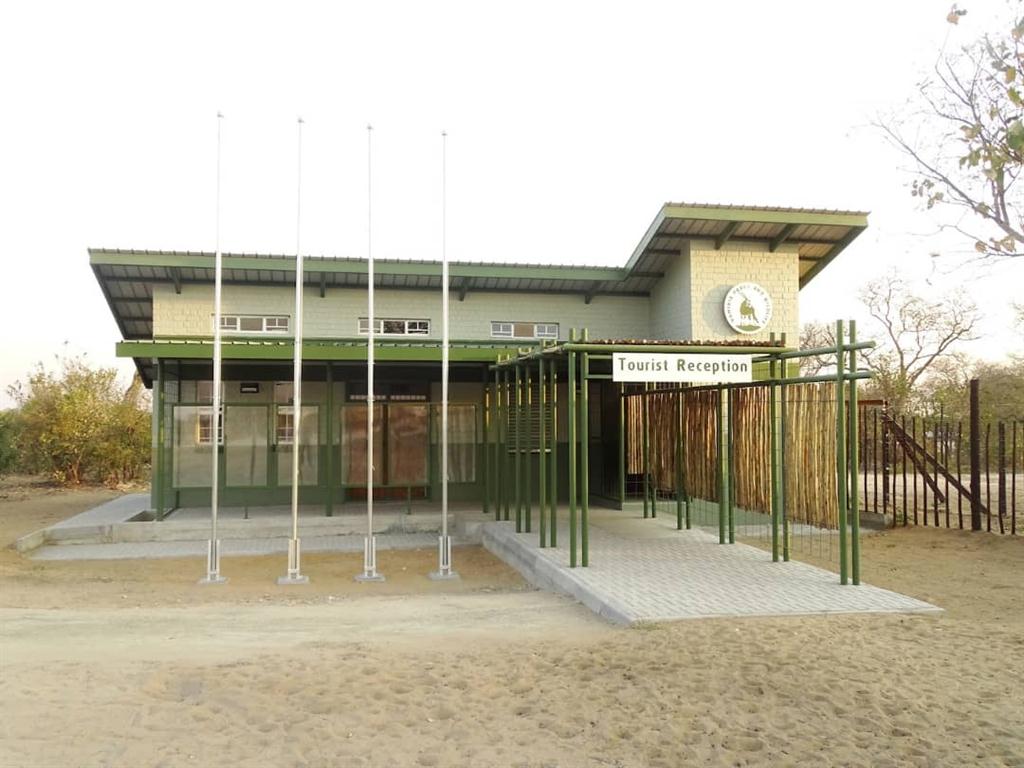Aerial wildlife survey coming
An aerial wildlife survey will be conducted for the Zambezi and Kavango regions, including the Bwabwata and Khaudum national parks and parts of its neighbouring conservancies, which are all part of the Kavango-Zambezi Transfrontier Conservation Area (KAZA TFCA).
This was announced by environment minister Pohamba Shifeta at the inauguration of the new Bwabwata park management station over the weekend.According to Shifeta the ministry, with the support of the German government, has commissioned the survey that will take place from the middle of September to early October.
He said an experienced survey team will conduct the aerial survey for the about three weeks, with the aim of getting an updated estimate of the numbers and distribution of elephants in the northeast of the country since 2015. “Elephant and other wildlife will be counted from a low-flying aircraft by trained observers,” he said.
Shifeta explained that the survey team will use a method that is widely applied and internationally accepted, which means that surveys from different years and different places can be compared and used to show trends in wildlife populations and their distribution. He said the new park station, entrance gate and tourist reception area is the biggest development for the Buffalo Core Area of Bwabwata.
“We are working hard to establish our parks as viable tourist destinations that will benefit the people who live alongside them.”
Shifeta said through the continuous support of the German Development Cooperation, via the KfW, new park stations have been completed at the Buffalo Core Area, Shuno Station in the Mudumu National Park and some limited extended facilities at the Ngenda and Susuwe stations.
These new stations are in addition to other facilities built through the German Development Cooperation in the south at Oranjemund, Lüderitz, Rosh Pinah and Aus for the development of the Tsau //Khaeb (Sperrgebiet) National Park. Each new station provides top-quality houses for staff, an attractive entrance gate and visitor reception, offices, workshops and electrical and water supplies.
“The new houses are a huge improvement on the old, dilapidated wooden 'kimbos' in which most of the staff members have been living until now,” said Shifeta. The German Development Cooperation assistance to the Namibia Parks Programme, which is better known as NamParks, is now in its fourth and fifth phase. In 2006, the first two phases began with the Bwabwata, Mudumu and Mamili parks project. Since then NamParks grew rapidly and phase three supported the Khaudum, Bwabwata, Mudumu and Nkasa Rupara national parks.
“The current fourth phase has been in full swing to complete the work in the northeast and drove the development of Tsau//Khaeb (Sperrgebiet) National Park forward. The fifth phase has been devoted to develop Namibia's coastal parks,” said Shifeta. He said the ministry regards the conservation of biodiversity very highly.
“Our wildlife provides an important contribution to the country's economy. Namibia's tourism is highly dependent on wildlife and represents one of Namibia's economic pillars. Wildlife therefore contributes significantly to the livelihoods of the local communities in rural areas.”
According to Shifeta national parks are a vital tool for conserving Namibia's essential biodiversity.
“By managing parks, their irreplaceable assets and unlimited potential will be conserved for future generations. In addition, every year Namibia's national parks draw large numbers of tourists to Namibia, generating employment and stimulating development nationwide. National parks also provide a unique opportunity to benefit local communities through rural development, while providing for species and habitat conservation, research, education and recreation opportunities.” Shifeta said Bwabwata is very special in that it supports a large wildlife and human population. He said a major accomplishment was that humans and wildlife are now living in a status quo that offers tremendous benefits to both conservation and rural community development.
“In Bwabwata National Park, park neighbour and resident relations are key to long-term conservation initiatives and the quality of life for local communities, mainly the Khwe San community as park residents. It is a win-win situation.”
Shifeta said with community game guards and resource monitors in place, local communities have new opportunities in ecotourism and conservation, while the wildlife benefits from protection and an increase in numbers. He said Bwabwata's Buffalo Core Area is a part of the KAZA TFCA, which covers parts of Namibia, Angola, Botswana, Zambia and Zimbabwe, and aims to enable the free movement of wildlife between these countries. He added that a land-use plan for the resource management zone of the Bwabwata National Park, where the community lives, has been drafted and will soon be signed off for full implementation. New concessions have also been identified that will bring more benefits to communities.
This was announced by environment minister Pohamba Shifeta at the inauguration of the new Bwabwata park management station over the weekend.According to Shifeta the ministry, with the support of the German government, has commissioned the survey that will take place from the middle of September to early October.
He said an experienced survey team will conduct the aerial survey for the about three weeks, with the aim of getting an updated estimate of the numbers and distribution of elephants in the northeast of the country since 2015. “Elephant and other wildlife will be counted from a low-flying aircraft by trained observers,” he said.
Shifeta explained that the survey team will use a method that is widely applied and internationally accepted, which means that surveys from different years and different places can be compared and used to show trends in wildlife populations and their distribution. He said the new park station, entrance gate and tourist reception area is the biggest development for the Buffalo Core Area of Bwabwata.
“We are working hard to establish our parks as viable tourist destinations that will benefit the people who live alongside them.”
Shifeta said through the continuous support of the German Development Cooperation, via the KfW, new park stations have been completed at the Buffalo Core Area, Shuno Station in the Mudumu National Park and some limited extended facilities at the Ngenda and Susuwe stations.
These new stations are in addition to other facilities built through the German Development Cooperation in the south at Oranjemund, Lüderitz, Rosh Pinah and Aus for the development of the Tsau //Khaeb (Sperrgebiet) National Park. Each new station provides top-quality houses for staff, an attractive entrance gate and visitor reception, offices, workshops and electrical and water supplies.
“The new houses are a huge improvement on the old, dilapidated wooden 'kimbos' in which most of the staff members have been living until now,” said Shifeta. The German Development Cooperation assistance to the Namibia Parks Programme, which is better known as NamParks, is now in its fourth and fifth phase. In 2006, the first two phases began with the Bwabwata, Mudumu and Mamili parks project. Since then NamParks grew rapidly and phase three supported the Khaudum, Bwabwata, Mudumu and Nkasa Rupara national parks.
“The current fourth phase has been in full swing to complete the work in the northeast and drove the development of Tsau//Khaeb (Sperrgebiet) National Park forward. The fifth phase has been devoted to develop Namibia's coastal parks,” said Shifeta. He said the ministry regards the conservation of biodiversity very highly.
“Our wildlife provides an important contribution to the country's economy. Namibia's tourism is highly dependent on wildlife and represents one of Namibia's economic pillars. Wildlife therefore contributes significantly to the livelihoods of the local communities in rural areas.”
According to Shifeta national parks are a vital tool for conserving Namibia's essential biodiversity.
“By managing parks, their irreplaceable assets and unlimited potential will be conserved for future generations. In addition, every year Namibia's national parks draw large numbers of tourists to Namibia, generating employment and stimulating development nationwide. National parks also provide a unique opportunity to benefit local communities through rural development, while providing for species and habitat conservation, research, education and recreation opportunities.” Shifeta said Bwabwata is very special in that it supports a large wildlife and human population. He said a major accomplishment was that humans and wildlife are now living in a status quo that offers tremendous benefits to both conservation and rural community development.
“In Bwabwata National Park, park neighbour and resident relations are key to long-term conservation initiatives and the quality of life for local communities, mainly the Khwe San community as park residents. It is a win-win situation.”
Shifeta said with community game guards and resource monitors in place, local communities have new opportunities in ecotourism and conservation, while the wildlife benefits from protection and an increase in numbers. He said Bwabwata's Buffalo Core Area is a part of the KAZA TFCA, which covers parts of Namibia, Angola, Botswana, Zambia and Zimbabwe, and aims to enable the free movement of wildlife between these countries. He added that a land-use plan for the resource management zone of the Bwabwata National Park, where the community lives, has been drafted and will soon be signed off for full implementation. New concessions have also been identified that will bring more benefits to communities.





Comments
Namibian Sun
No comments have been left on this article